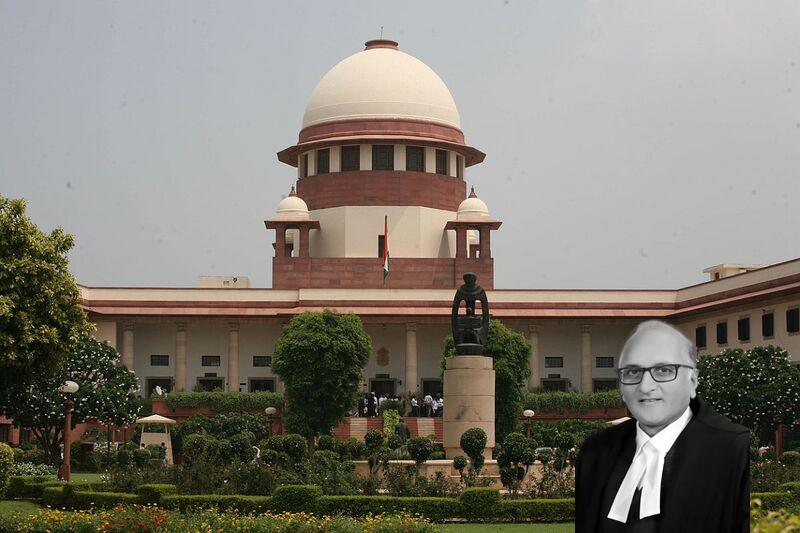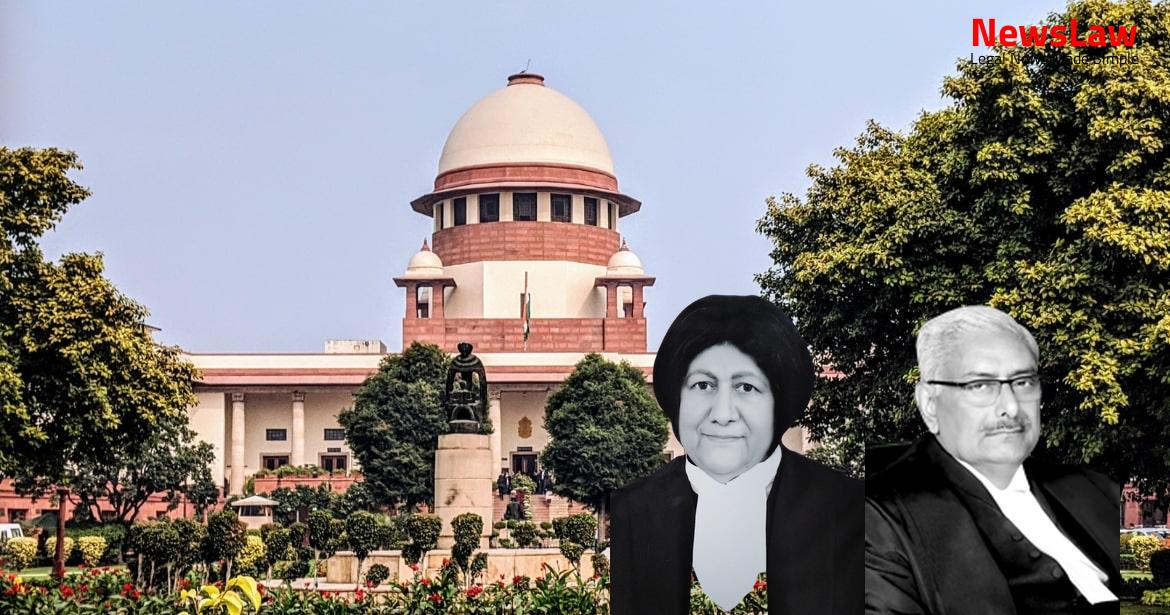By Sanction Letter dated 22.06.2018, the lender sanctioned a financial facility of 400 crores to the borrower. On 25.06.2018, a “Master Facility Agreement” (“MFA”) was entered between IL&FS and HDFC for 400 crores. It was also agreed that ‘ all the receivables derived/to be derived from the operation of the Borrower’s Contracts, a sufficient portion of which, to pay the principal and interest as and when the same shall become due ’ in terms of the said MFA was assigned and pledged and was to be ‘ set aside for that purpose on the same day ’ and a Power of Attorney by way of Security Interest was also executed between the IL&FS and HDFC. By order dated 15.10.2018 NCLAT, inter-alia, stayed: (i) the institution or continuation of suits or any other proceedings against the IL&FS or its 348 group companies, before any court/tribunal/arbitration panel/arbitration authority ; (ii) any action to foreclose, recover or enforce any security interest created over the assets of the IL&FS or those of its 348 group companies ; and (iii) the acceleration, premature withdrawal or other withdrawal, invocation of any term loan, corporate loan, bridge loan, commercial paper, debentures, fixed deposits, guarantees, letter of support, commitment or comfort 3 and other financial facilities or obligations availed by the IL&FS and its 348 group companies. IL&FS called upon the lender by letter dated 27.10.2018 to reverse the debit of 6.24 crores and credit the amount back into the account of the borrower. The UOI, through the Ministry of Corporate Affairs, in an affidavit stated that certain banks were still debiting amounts from IL&FS group entities classified as “Amber” and “Red” without authorization from the IL&FS board and those debits flouted the order dated 15.10.2018. The Escrow Bank on 23.10.2019 wrote to former judge of this court stating that the receivables stood assigned in favour of HDFC and monies received were not the assets of the IL&FS.
On 03.07.2020, former judge of this court issued a final order holding that the actions of the HDFC and Escrow Bank in debiting the amount from the Escrow Account violated the orders passed by NCLAT and thus HDFC and the Escrow Bank were directed to purge themselves within two weeks. It was held, borrower “may have right and interest on the residual of deposits which is an excess of principal and interest for which security interest is created in favour of the lender which Escrow Bank is permitted to transfer to the borrower.” IL&FS’s argument that there was no assignment of the receivables, but only the creation of security interest in the receivables was rejected. However, the right over receivables deposited in the Escrow Account to the extent they were in excess of principal and interest, was retained by the IL&FS and in the event, any amount in excess of the said principal and interest was transferred to or debited in the HDFC’s account and they needed to be reversed, after adjusting the shortfall in debiting any interest or principal of any earlier months.
The receivables deposited in the Escrow Bank were the assets of the Borrower which were deposited in the Escrow Bank as security for the repayment of the loan of 400 Crores. That order by former judge of this Court, considered all the submissions by the lender, the borrower and the Escrow Bank, and after examining the principal (and the facility agreement) and all other agreements and attendant circumstances. The clear indicators that the Facility is secured by charge created 7 over the property and the receivables (rent) can be gathered from the following: firstly, sanction letter for the term loan and the Facility specifically refers to this as a loan for a term of 96 months to be repaid by IL&FS from the lease rentals from commercial premises. It is also pointed out that pursuant to the execution of the financing documents IL&FS submitted form CHG-one, which is confirmed by HDFC Ltd, i.e., the lender form for registration of creation of charge to secure the Facility. The expression assigned is clarified later, in the words “shall be set aside for that purpose”. It was argued that a plain analysis of the transaction documents makes it clear that the facility extended to the borrower is a Lease Rental Discounting (LRD) loan transaction, which is materially different from a traditional loan transaction. It was submitted that no judicial order or judgment prohibited the licensees of the TIFC property from depositing monthly lease rent in the Escrow Account, nor the orders held that the lender was disentitled from using the assigned receivables/rents. It was contended that former judge of this court by the order (dated 03.07.2020) unduly broadened the ambit of the order dated 15.10.2018. Per Clause 2 (cc), “Security” had to have the same “meaning as described in Clause-8 of this Agreement and also described in the Schedule-III”. The Borrower hereby unconditionally and irrevocably undertakes and confirms to create security interest on the said Secured Property in favour of the Lender and perfect the security creation as mentioned herein above in favour of the Lender in such form and manner as may be deem fit by Lender within 6 months from the date of first disbursement of the Facility. Notwithstanding any such assignment or transfer, the Borrower shall, unless otherwise notified by Lender, continue to make all payments under the Facility Agreement to Lender and all such payments when made to Lender shall constitute a discharge to the Borrower from its liabilities only to the extent of such payments.” Clause 15 covers ‘Event of Default’. [..] (c) The Borrower shall not alter, change or modify the terms of the Borrower’s Contracts in so far as it relates to such terms which would have an adverse effect or impact on the Receivables and/or which shall otherwise detrimentally effect the Lender’s interest in the Secured Property and income thereof.” “5. c) The Borrower agrees that the Receivables shall be exclusive property of the Lender for the purpose of secured repayment of the Facility and as such the Borrower will not make any further borrowing on the strength of the Receivables as being Borrower’s Property.” An ‘Escrow Account Agreement’ was also entered between the lender and the borrower on the same date under which the borrower has to open an Escrow Account with the Escrow Bank.
Recital (C) of the Escrow Account Agreement provided: 12 “(C) The Borrower has agreed that, the payments to be collected/received by the Borrower from the clients of Business Service Centre/License/Lessee of various Units/properties (hereinafter referred to as “the said Units”) built and/or to be built and leased/to be leased on the Secured Property detailed in Schedule B hereunder (hereinafter called “the said Property”) for/against which the Facility granted/to be granted by Lender as per the Offer Letter and Facility Agreement, shall be credited to the said Escrow Account (hereinafter referred to as “the Receivables”) and the Lender shall on satisfaction of the condition as described in Item No 6 of Schedule A hereunder, adjust all the amounts to be paid by the Borrower to the Lender under the Facility Agreement, from time to time, out of the amounts credited in the said Escrow Account, and permit the transfer in the Designated account of the Borrower opened with the Escrow Bank, the amount as mentioned in Item No 7 of Schedule A out of the remaining balance in the said Escrow Account after such adjustment as agreed hereunder.” (c) The Escrow Bank agreed that during the currency of the term of this Agreement as may be amended from time to time, the Escrow Bank shall ensure that the Escrow Account is operated and maintained as per the terms set out herein and shall not permit any deviation, without the written consent of the Lender. OPERATION AND MAINTENANCE (a) The Borrower agrees that, the payments to be collected/received by the Borrower from the Business Service Centre/Licensee/lessee of various Units/properties built and/or to be built and leased/to be leased on the Property which is more particularly described in Schedule of the said Facility Agreement (hereinafter called “the said Property”) for/against which the Facility granted/to be granted by Lender as per the Offer Letter and Facility Agreement, shall be credited to the said Escrow Account (hereinafter referred to as “the Receivables”) and the Lender shall on satisfaction of the condition(s) as described in Item No 6 of Schedule A hereunder, adjust all the amounts to be paid by the Borrower to the Lender under the Facility Agreement, from time to time, out of the amounts credited in the said Escrow Account, and transfer to the Designated Account of the Borrower, the amount as mentioned in Item No 7 of Schedule A out of the remaining balance in the said Escrow Account after keeping the minimum balance in the Escrow Account. ————————- (e) The Borrower hereby irrevocably authorizes the Escrow Bank to pay and to transfer the money(ies) received in the Escrow Account to the Lender as per the terms and conditions agreed in the Offer Letter, Facility Agreement and this Agreement as may be applicable from time to time.” An Assignment and Administration Agreement was also entered on the same date i.e., 25.06.2018 with the lender and borrower. By recital clause 2 of the said Power of Attorney document, HDFC could “appropriate the proceeds received towards the discharge of the Facility” ; recital clause 5 enabled the lender to put to use, the secured property and give the business centre, etc, on leave, license or lease basis in the event the borrower’s existing arrangements were terminated or ended.
, the court held: “It is well settled that the nomenclature given to the document is not decisive factor but the nature and substance of the transaction has to be determined with reference to the terms of the documents and that the admissibility of a document is entirely dependent upon the recitals contained in that document but not on the basis of the pleadings set up by the party who seeks to introduce the document in question.” In Assam Small Scale Ind. Likewise, another allied principle of contract interpretation, is that where the transaction is not the subject of one document, but several, which refer to each other, or a reading of all, describe the entire contract, then, it is open to the court to consider all of them together. Chattanatha Karayalar v The Central Bank of India & Ors wherein this court held that: “The principle is well-established that if the transaction is contained in more than one document between the same parties they must be read and interpreted together and they have the same legal effect for all purposes as if they are one document. This is because the assignment is not hedged with any condition; it entitles HDFC to appropriate the proceeds, to the extent of liability of IL&FS. In other words, future rent payable is actually an unsecured debt that the owner/borrower would have been otherwise entitled to claim, but for the assignment or transfer, to the lender/creditor. Clause 4(c) of the Escrow Agreement is more categorical; it authorizes only the lender (i.e., HDFC) to instruct the 17 escrow bank to transfer the amounts and permits the bank to appropriate amounts towards adjustment arising out of the Facility liability. Under the Transfer of Property Act, 1882, Section 5 states generally that all manner of property is capable of transfer. “actionable claim” means a claim to any debt, other than a debt secured by mortgage of immoveable property or by hypothecation or pledge of moveable property, or to any beneficial interest in moveable property not in the possession, either actual or constructive, of the claimant, which the Civil Courts recognise as affording grounds for relief, whether such debt or beneficial interest be existent, accuring, conditional or contingent:” 18 Thus, in terms of Section 3 of the TPA, actionable claim means (a) claim to an unsecured debt (other than a debt secured by mortgage of immovable property, hypothecation or pledge (b) beneficial interest in a movable property. Transfer of actionable claim — (1) The transfer of an actionable claim [whether with or without consideration] shall be effected only by the execution of an instrument in writing signed by the transferor or his duly authorised agent, shall be complete and effectual upon the execution of such instruments, and thereupon all the rights and remedies of the transferor, whether by way of damages or otherwise, shall vest in the transferee, whether such notice of the transfer as is hereinafter provided be given or not: Provided that every dealing with the debt or other actionable claim by the debtor or other person from or against whom the transferor would, but for such instrument of transfer as aforesaid, have been entitled to recover or enforce such debt or other actionable claim, shall (save where the debtor or other person is a party to the transfer or has received express notice thereof as hereinafter provided) be valid as against such transfer. If A dies, the Bank is entitled to receive the amount of the policy and to sue on it without the concurrence of A’s executor, subject to the proviso in sub- section (1) of section 130 and to provisions of section 132. vs Tara Rani it was held that: 19 “Actionable claim can be transferred only by execution of an instrument in writing signed by the transferor or his duly authorised agent, whereas under Section 54 of the Transfer of Property Act, “Sale” is a transfer of ownership in exchange for a price paid or promised or part-paid and part-promised.
******



